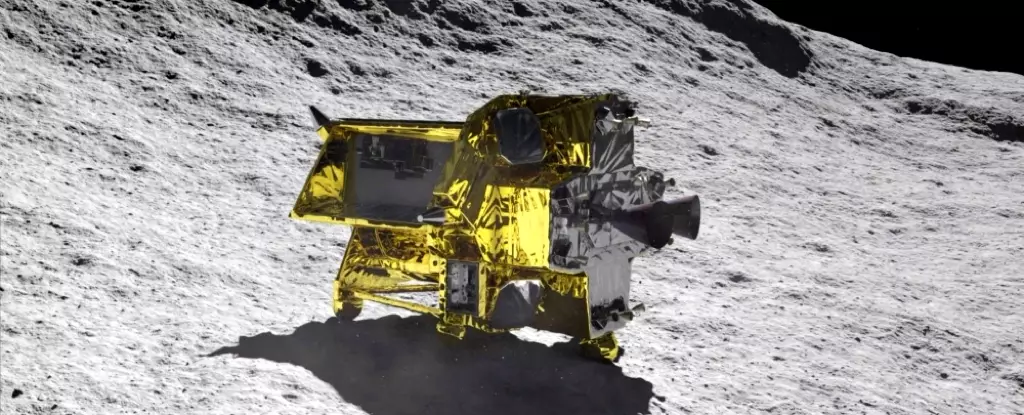Japan achieved a significant milestone by successfully landing its unmanned Smart Lander for Investigating Moon (SLIM) mission on the lunar surface. This historic event marked Japan as the fifth country to achieve a soft lunar landing, earning the craft the nickname “Moon Sniper.” However, the mission did not come without its challenges, and Japan’s space agency had to make difficult decisions to ensure the possibility of recovery for the lander.
After the touchdown, the Japan Aerospace Exploration Agency (JAXA) faced uncertainty about the craft’s solar batteries generating power. To address this concern, JAXA made a strategic decision to switch off the lander almost three hours after touchdown. By doing so, the space agency created an opportunity for a potential recovery when sunlight hits the solar panels. This decision was based on the telemetry data received, indicating that the SLIM’s solar cells were facing west.
Japan’s successful soft landing on the Moon is an impressive feat, making it the fifth country to achieve this milestone. The exclusive club of lunar landers consists of the United States, the Soviet Union, China, India, and now Japan. However, the journey to join this club is far from easy, as crash landings and communication failures are common obstacles faced by lunar missions.
The SLIM mission aimed to explore a specific crater on the Moon’s surface, where the mantle, the deep inner layer below the crust, is believed to be exposed. This crater held the potential to provide valuable insights into the Moon’s water resources, which could be pivotal for future lunar bases and even serve as stopovers on the way to Mars. The data collected from the rocks in the crater would help scientists unravel the mysteries surrounding the Moon’s water resources.
As part of the SLIM mission, two probes detached successfully. One of the probes carried a transmitter, while the other was designed to maneuver across the lunar surface and transmit images to Earth. This shape-shifting mini-rover, slightly larger than a tennis ball, showcased Japan’s innovation and was co-developed by the creators of Transformer toys. These probes played a crucial role in gathering valuable data about the Moon’s surface.
JAXA is currently conducting a detailed analysis of the gathered data to determine whether the craft achieved its goal of landing within 100 meters of the intended landing spot. This analysis will shed light on the overall success of the mission and help scientists gain a deeper understanding of the Moon’s characteristics. The results of this analysis will be eagerly awaited as they hold the key to numerous scientific and space exploration advancements.
While the SLIM mission faced its fair share of challenges, including uncertainties about the craft’s power generation and landing accuracy, JAXA remains optimistic. The space agency expressed satisfaction with the successful landing and highlighted the possibility of producing significant results despite the adversities. Further announcements regarding the mission’s outcomes and the status of the SLIM craft are expected in the upcoming week.
Previous attempts by Japan to explore the Moon have faced setbacks, with one failed public mission and an unsuccessful private initiative. The Omotenashi lunar probe sent in 2022 as part of the United States’ Artemis 1 mission did not achieve its objectives. Additionally, Japanese startup ispace’s endeavor to become the first private company to land on the Moon also faced communication loss during a “hard landing” in April. These setbacks highlight the inherent challenges and risks associated with lunar missions.
Japan’s Moon landing mission with the SLIM craft represents a significant accomplishment for the nation’s space exploration endeavors. Despite the complexities and uncertainties faced during the mission, the successful soft landing opens doors to a better understanding of the Moon’s resources and potential for future space exploration. As Japan continues to push boundaries in space exploration, its dedication and innovation will undoubtedly contribute to exciting discoveries and advancements in the field.


Leave a Reply